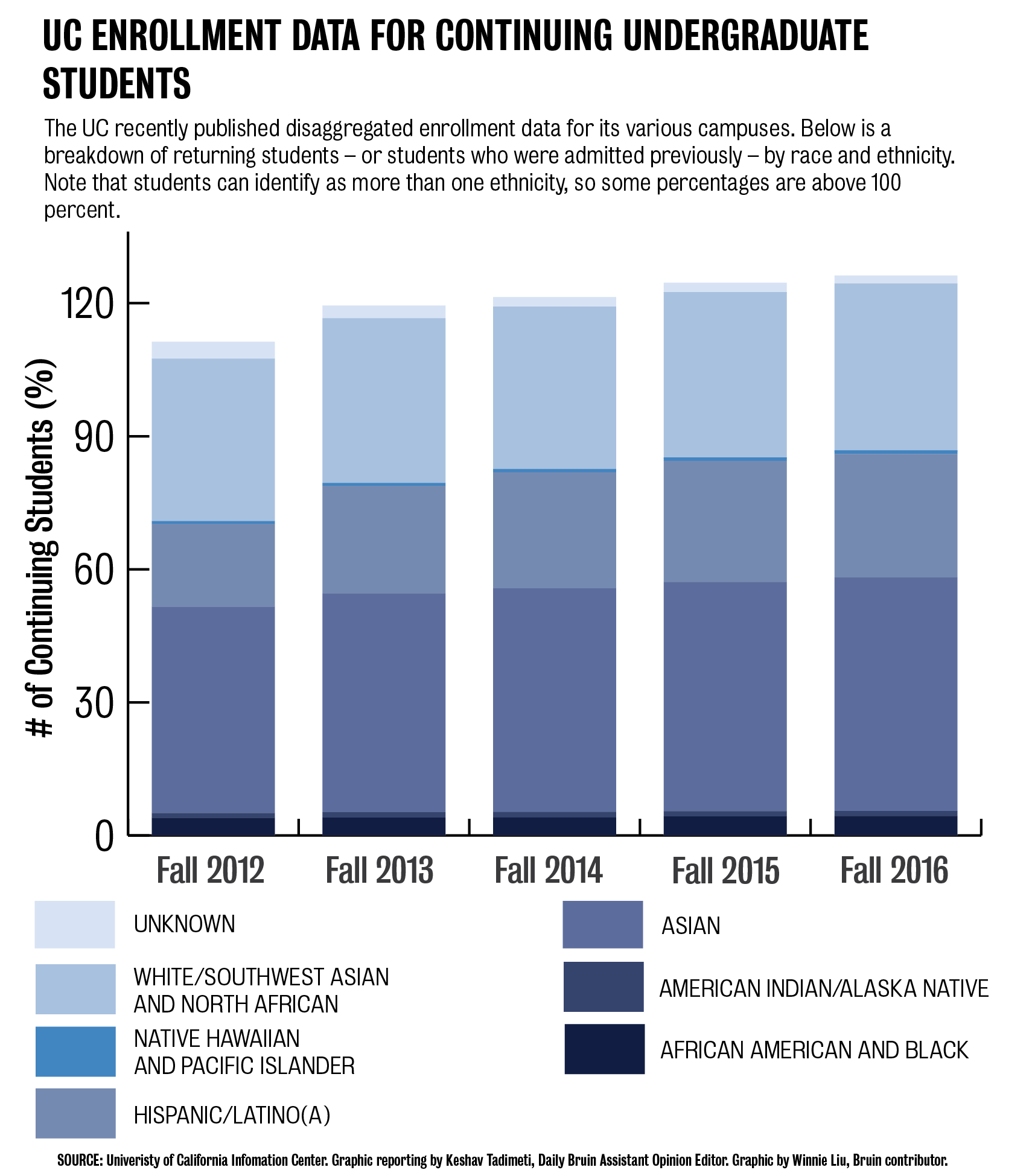Arman Sharif: UC must assemble task force to interpret disaggregated ethnicity data

By Arman Sharif
May 31, 2017 11:10 p.m.
Campus communities that felt invisible in the past are finally seeing some change in how university data represents them.
The University of California Information Center released enrollment and graduation data in April disaggregated by ethnicity. This data includes enrollment statistics for individual ethnicities, like Vietnamese or Armenian, as opposed to only reporting information for the overly broad racial categories the Department of Education mandates, such as Asian / Pacific Islander or white, a category that includes Middle Easterners and North Africans.
But while students now have access to this long-awaited disaggregated data, they have no means of interpreting how it’s relevant to them. We can find general trends, such as Pell Grant-recipient percentages as a proxy for low-income students, though it’s hard to draw definitive conclusions from a spreadsheet of enrollment and graduation numbers.
Passively sitting on a pile of numbers isn’t enough; the University must implement systemwide policy regarding academic achievement, health and legal services, campus climate and dropout and retention rates. The University should assign an analyst or assemble a task force to interpret the data. This task force would assess disparities between ethnic groups previously classified under one homogenous racial group, distinguishing Cambodian and Chinese student experiences even though both are technically classified as Asian-American Pacific Islander, for example.
This disaggregated data is a product of years of student activism. In 1996, Proposition 209 prohibited gender, race or ethnicity as factors in admissions and other activities at California public universities. This left underrepresented groups worried about their presence and resources on campus. The Asian Pacific Coalition at UCLA pushed hardest for these numbers through its 2007 “Count Me In!” campaign advocating for disaggregation of AAPI data.
Ryan Chan, senior research and planning analyst with Institutional Research and Academic Planning at the UC Office of the President, said the data is for transparency and the UC has no active projects planned for it. He added the office is open to feedback from all campuses and this release is just the first step.
The University’s stance is shortsighted. For now, students would have to calculate on their own how the data could be relevant to their presence on campus, instead of receiving research from the UC that indicates who needs additional outreach.
With the disaggregated enrollment numbers, a UC-appointed task force could determine where students of one ethnicity tend to have certain needs and give the University a better idea of how well it serves students. Instead of waiting for students to make demands, the UC can streamline its services and resources toward different groups.
Based on these analysts’ recommendations, the UC can implement programs. For example, Southwest Asian and North African communities on campus – formerly designated as Middle Eastern and white – still do not have an admit yield weekend, which entails overnight Bruin Day programs to attract newly admitted students from a particular background. Such a project could be justified with enrollment numbers.
These numbers could also support recent efforts by students to establish a cross-cultural center on campus, as a way to unify all marginalized groups on campus.
[Related: UCLA must be in solidarity with Cal, demand own multicultural center]
The University could calculate if enrollment numbers for a group are significantly lower than its overall college-bound-age population percentage in California and whether certain ethnicities, within the AAPI or SWANA umbrellas for example, have lower graduation rates than other groups.
Kevin Casasola, a fourth-year statistics student and education coordinator of Samahang Pilipino, which is a member of APC, said comprehending disaggregated data is necessary for understanding communities of color.
“Disaggregated data gives communities a better understanding (of) what disparities may exist in education and gives us the tools to address them,” Casasola added.
Disaggregation also means lifting the mask of the model minority myth and seeing if minority groups stereotyped as wealthy, successful and upwardly mobile actually see poorer academic performance and lower income.
I see my Iranian communities plagued by this model minority perception, even though enrollment numbers would paint a different picture. Nearly 42 percent of Iranian undergraduates at UCLA, out of the students for whom data has been collected, receive Pell Grants. Analysis from the UC can bring light to these kinds of issues and promote understanding of people’s various backgrounds to improve campus climate. As similar generalizations affect Asian-Americans, the data can dispel myths like high academic performance in the entire community.
Of course, the UC can’t take ethnicity or race information into consideration for admissions decisions and other university activities under Proposition 209. However, there are still ways for the University to engage these communities, including at the high school level in underserved communities and school districts. The disaggregated data task force can also provide recommendations to admissions offices, existing retention institutions like the Community Programs Office and student groups on campus.
There are shortcomings in the data: Some graduate student numbers aren’t included, and some data has only been collected since 2014. But a task force can help tabulate these lapses and help the University better organize its data collection. For example, the UC could also look into including LGBTQ identities in the disaggregated data, although the sensitive nature of storing a database of this information requires extra precaution.
Collecting data in this fashion is unprecedented, and interpreting it is something the UC should pioneer. Policy think tanks or census developers can look to the UC to model ever-evolving ethnic classification paradigms.
Students have waited for and demanded these numbers with specific aims for nearly a decade. That means the UC shouldn’t consider a data dump to be its final product.

